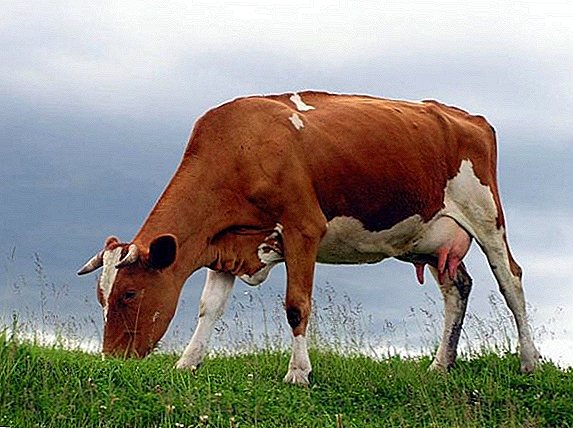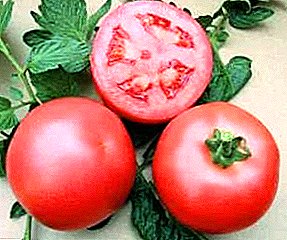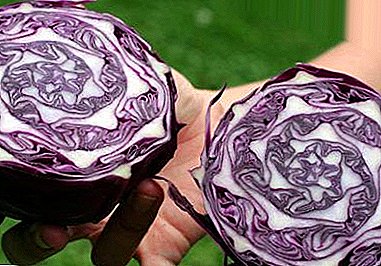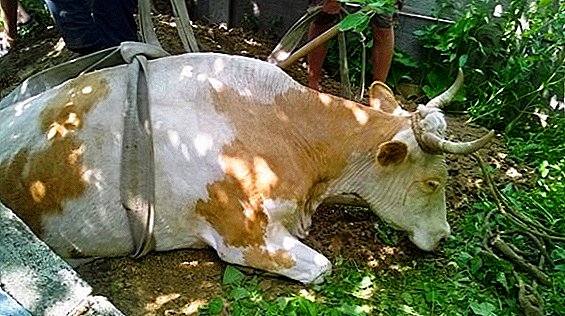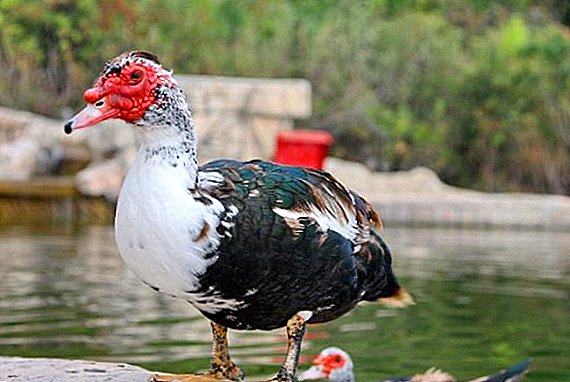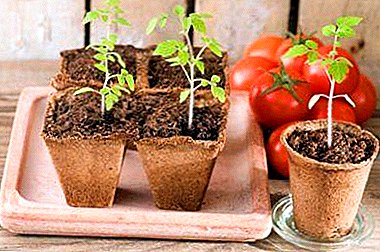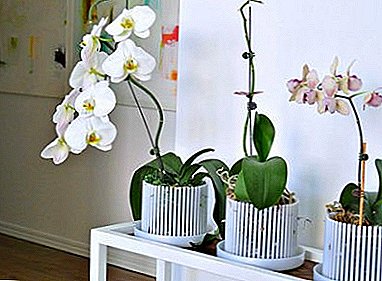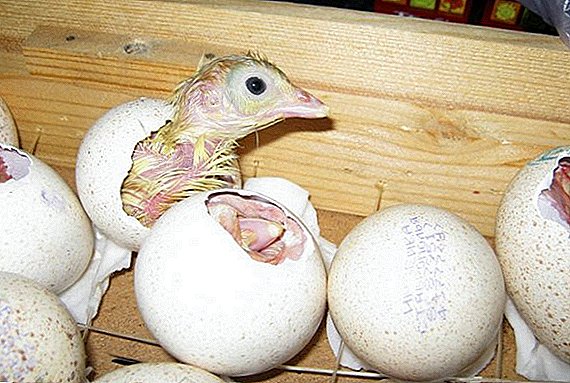 When breeding turkeys you can face an unpleasant situation when the offspring of the bird dies. This can happen both at different periods of embryo development inside the egg, and at the early stages of life after hatching of the chicks. Due to inexperience and ignorance, poultry farmers often make mistakes in the process of incubation or after the birth of babies into the world. In order to prevent the loss of future livestock, it is important to know about the most frequent causes of death of babies and in time to adjust the conditions of incubation and care - this is further in the article.
When breeding turkeys you can face an unpleasant situation when the offspring of the bird dies. This can happen both at different periods of embryo development inside the egg, and at the early stages of life after hatching of the chicks. Due to inexperience and ignorance, poultry farmers often make mistakes in the process of incubation or after the birth of babies into the world. In order to prevent the loss of future livestock, it is important to know about the most frequent causes of death of babies and in time to adjust the conditions of incubation and care - this is further in the article.
Why do poults die in an egg
For offspring, you must strictly adhere to the rules of incubation. Under natural conditions, the hen independently creates optimal conditions for eggs for temperature, humidity, and even turns the eggs with the help of its beak. However, when using an incubator, you need to set all the parameters yourself, and they should be as close to natural as possible.
Did you know? Wild turkeys can develop in flying speed up to 88 km / h, and while running - up to 40 km / h. Poultry do not possess such abilities.
Temperature disturbance
The most common cause of embryo death under the shell is an improperly set temperature at which future chicks overcool or overheat. Overheating is especially dangerous up to the weekly age of embryo development, underheating (moderate) leads to slow development at any growth stage, and with significant underheating the chicks die.  Violation of the regime can occur in such cases:
Violation of the regime can occur in such cases:
- Initially set the wrong temperature for eggs.
- Incorrect location of temperature sensors. For example, if the sensors (or thermometers) are located near the fan, the figures will be underestimated, if they are too high near the heating elements.
- Different temperatures in different parts of the incubator. It may happen that eggs located closer to the heating elements will receive more heat than distant eggs.
We recommend reading about the features of growing turkey poults in an incubator.
If the chicks were able to survive under the wrong temperature conditions, you can notice such deviations:
- at overheating - feathered hatch ahead of schedule, have poor plumage, thin and weak paws;
- with underheating - nestlings hatch later than the set time, have long plumage, thick paws, not drawn in yolk sac. If the temperature is insufficient, the chicks may peck at the hole in the shell for air, but not get out of the egg.
 It is important to know how to solve this problem. If you are not sure what temperature is required when incubating turkeys, check the table (the difference between the dry and wet thermometer is due to different air humidity):
It is important to know how to solve this problem. If you are not sure what temperature is required when incubating turkeys, check the table (the difference between the dry and wet thermometer is due to different air humidity):
| Days of Incubation | Temperature of dry thermometer, ° C | Wet thermometer temperature, ° C |
| 1-5 | 37,5-38,0 | 29,5 |
| 6-12 | 37,6-37,8 | 29,5 |
| 13-25 | 37,5 | 28 |
| 26 | 37,2 | 29-30 |
| 27 | 37,2 | 30-33 |
| 28 | 37,0 | 35 |
If the temperature sensors are located incorrectly, it is necessary to measure the indicators at the level of the shell and near the sensor. Further, these figures should be recorded and further oriented on them. Also, with each airing and cooling it is necessary to carefully rearrange the eggs - to move them located in the center to the edges and vice versa. Under natural conditions, the hen mixes the eggs for the same heating / cooling.
Important! This incubation temperature can be found by measuring it at the level of eggs in different parts of the tray.
High or low humidity
Air humidity is also a key factor in incubating chicks.  If the chicks survived in violation of the moisture regime, the following picture can be observed:
If the chicks survived in violation of the moisture regime, the following picture can be observed:
- insufficient moisture - the young hatch after a fixed period, has a small amount of residual yolk, there is a shortage of weight, poor growth. The lack of moisture is very dangerous in the final stages of incubation - because of the dryness of the air, the shell hardens strongly, thereby making it difficult for the baby to stick and release from the shell;
- excessive moisture - future chicks are especially sensitive to excessive moisture in the middle of development (10-20 days). At this time, the allantois closes, and the removal of excess moisture from the egg becomes vital. When excess moisture in the egg fluid is retained, the development of chicks slows down, poorly consumed white and yolk. The specific liquid sticks the beak to the chicks, because they can not choose from the egg, their fluff is dirty and glued.
Standards of humidity during incubation of turkey poults:
| Days of Incubation | Humidity,% |
| 1-8 | 60-65 |
| 8-14 | 45-50 |
| 15-25 | 55 |
| 26-28 | 80 |
To determine the humidity inside the device, you can use a hygrometer or moisture meter. These devices are inexpensive, but are very important to ensure an adequate microclimate for chicks.
It will probably be useful for you to learn about the necessary devices for incubating eggs: a hygrometer, a psychrometer, a thermostat.
If the indicators do not correspond to the norms, it is necessary to set the required value on the device. Also, the humidity can be adjusted manually: at low rates, put in an incubator containers with water, spray eggs daily. To lower the humidity, reduce the level of water in the incubator tanks; put cloth, gauze or cotton wool inside the device.  Hygrometer is used to determine the humidity in the incubator
Hygrometer is used to determine the humidity in the incubator
Inadequate turns
The peculiarity of turkey poult breeding is that they need to turn the eggs much more often than other feathered ones. Violation of the regime of coups often leads to the death of embryos in the first half of development. At the same time, examining the egg in the ovoscope, one can notice how the clot stuck to the shell due to the overheating of this side of the egg. To avoid such a situation, you must strictly adhere to the regime of coups:
- 1-14 days of incubation: a coup every 3 hours;
- 15-25 days of incubation: a coup 4-6 times a day;
- 25-28 days: egg stiffness.
Eggs cooled during transfer to hatch
In incubators, which consist of the main and hatcher cabinets, the eggs in the last incubation periods (25-26 days) must be moved to the hatcher chamber. This can occur in manual and automatic mode. If you examined them before moving the eggs, and the embryos were alive, and after they were placed in the hatching chamber, they died, the cause is most often hypothermia.  For example, you too often opened the hatcher, running cold air and disrupting the temperature and humidity. Chicks could also cool down and die in the main closet while filling the trays of the hatcher.
For example, you too often opened the hatcher, running cold air and disrupting the temperature and humidity. Chicks could also cool down and die in the main closet while filling the trays of the hatcher.
Important! It is possible to take chicks out of the hatcher no more than twice a day: in the morning and in the evening.
To prevent such an error, you need to clearly organize the process of transferring eggs to the hatcher:
- Wash and disinfect the hatcher before the transfer process and set the desired temperature there.
- The temperature in the room should not be less than + 25-28 ° C.
- Very carefully read the instructions for use of the output and main cabinets. The manufacturer may make recommendations regarding the movement of carts or the sequence of trays overload.
- The incubation cabinet can be turned off only after all (!) Eggs have been extracted from it.
- Outside the incubator eggs should not be more than 30 minutes.

Damage to transfer to output
With careless or rough handling, the shell or the circulatory system of the embryos in the egg may be damaged when they are transferred to the hatch.
Also, eggs can be damaged by improper use of the incubator. To prevent this problem, you need to carefully study the instructions for the device. If you have a large incubator (for 50 or more eggs), a person with sufficient physical strength should deal with the unloading and loading. A vacuum machine also significantly reduces the percentage of damaged eggs, provided it is used properly.
Nutrient Deficiency
Deficiencies of various vitamin-mineral substances in the protein and yolk can lead to the death of chicks or gross developmental disorders:
- dwarfism, retardation in development and growth;
- wrong position in the egg (lack of vitamin A, B12);
- short down;
- deformities of the embryo (lack of niacin, biotin, manganese, magnesium, zinc).
 To prevent this situation, you must adhere to strict criteria when choosing a turkey to get eggs. The bird should be healthy, eat well, ideally it should be a proven female, from which in the past we managed to get a normal brood.
To prevent this situation, you must adhere to strict criteria when choosing a turkey to get eggs. The bird should be healthy, eat well, ideally it should be a proven female, from which in the past we managed to get a normal brood.
We recommend to learn how to determine the sex of poults.
For the period of oviposition, it is imperative to follow the ration of the feathered, to enter into it vitamin and mineral supplements. When selecting eggs, it is worth checking eggs with an ovoscope and discarding substandard specimens.
Long egg storage
The maximum shelf life of eggs before laying in the incubator is 10 days, it is extremely important to comply with the storage conditions:
- the room must be dry and dark;
- storage temperature is + 12 ° C;
- air humidity - no more than 80%;
- The eggs are pointed downwards.
Important! You can not store eggs for incubation in the refrigerator!
The longer the shelf life of eggs, the less likely it is that chicks will breed from them:
- at storage up to 5 days hatchability 85%;
- when stored up to 10 days - 73%;
- when stored up to 15 days - reduced to 62%;
- after 20 days of storage - 50%.

What small turkeys can breathe
If the incubation process was successful, and healthy turkey poults were born, the most crucial period ahead. After all, newborn babies have a very sensitive and unadapted digestive tract, weak immunity, increased sensitivity to diseases and adverse conditions of detention. Next, consider the main causes of death of small birds.
Learn how to make a brooch for turkey poults with your own hands.
Non-observance of temperature
Adequate warmth is vital for newborn babies. When freezing at this age, birds will lag behind in development, gain weight poorly, in extreme cases they may die.
Temperature norms for turkey chicks:
| Age, days | Temperature, °C | Humidity,% |
| 1-3 | 32-34 | 72-74 |
| 4-6 | 28-30 | 70-72 |
| 6-10 | 26-28 | 65-70 |
| 11-15 | 24-26 | 62-65 |
| 16-20 | 22-24 | 60 |
| 21-30 | 20-22 | 55-60 |
Did you know? Baked turkey in a tube was Neil Armstrong's first meal on the moon.Usually electric lamps are used for heating. To control the temperature, it is necessary to make measurements with a thermometer near the heating element and at the far ends of the brooder.
 Observing the behavior of chickens in a brooder, we can conclude about the comfort of the temperature regime or to adjust it:
Observing the behavior of chickens in a brooder, we can conclude about the comfort of the temperature regime or to adjust it:- if the chicks are active, chirping, showing interest in food, evenly distributed over the brooder area, then the temperature regime is correct;
- if the babies are located at the edges of the box, as far as possible from the heating element, they look sluggish, they breathe heavily, it means that the temperature is elevated;
- if the kids are bunched up near the lamp - they are not warm enough, the temperature needs to be raised.
Malnutrition
The main problem in the diet is insufficient production of proteins. Unlike other agricultural birds, turkeys have a percentage of protein in the diet that can reach 25-30%.
Check out the details of feeding daily poults.
To ensure the protein norm in the diet of babies should be present:
- different types of cereals;
- cottage cheese, powdered milk;
- eggs;
- fish / meat and bone meal, minced meat.
The first food of the chicks should be: chopped boiled eggs, low-fat cottage cheese, boiled millet porridge, chopped onion feathers, corn / wheat flour. The frequency of feeding at the age of 1-10 days is 10 times, that is, babies need to be fed every 2 hours.
Video: How to feed the poults on the first day up to 7 days Until the age of 30 days, the number of feedings is reduced to 5 times. Be sure to in the diet of birds should be present mineral dressings: crushed shell rock (fractions up to 5 mm), chalk, table salt.
Important! Feed for poults must be of the highest quality, especially in the first days of life. In newborn turkeys, the length of the intestine relative to body weight is longer than that of the older bird (per 1 g of weight 1.6 cm of the length of the intestine), so food lingers longer. If the food is of poor quality, it begins to sour, ferment and rot inside the gastrointestinal tract, causes constipation, the development of pathogenic flora and intoxication.
Bad water
From the first days of life, babies should have constant access to clean, fresh, warm water, and it should not be possible to climb into the water bowl. Moisture should also not be allowed near the drinker. If children are deprived of water at the age of up to a week, they begin to have irreversible pathological changes in the stomach, the water-salt balance is acutely disturbed, and the temperature drops rapidly.
Video: How to water turkey poults in the first 10 days of life
Immediately after birth, they can be given water and sugar (1 tsp. Per liter), and after 12-24 hours to feed. Once every 7-10 days, babies need to be soldered with a solution of potassium permanganate (before dyeing the water into a light pinkish hue). Drinking temperature should be in the range of + 22-24 ° C. The most convenient for kids are vacuum drinkers, which you can even build with your own hands.
Learn how and how to drink turkey poults in the first days of life.
Diseases
If the conditions of detention are violated, infectious and non-infectious diseases can cause a death. Turkey poults are very sensitive to adverse conditions or improper feeding.
The most frequent ailments in small turkey poults (up to 30 days):
- Avitaminosis. You can notice this condition by the deterioration of feather cover, lethargy, discharge from the nose. To prevent diseases, it is necessary to include vitamin supplements containing vitamin A, E, groups B and D. For example, you can use the drug "Chiktonik". In addition to the complex of vitamins, it contains essential amino acids. Dosage - 1 ml per liter of water. You need to take it for 5 days, you can give it again in a month.
- Diarrhea. Also a frequent disorder in small chicks, the cause can be determined by the color of the discharge: brown diarrhea results from nutritional errors; If necessary, antibiotic therapy is needed, which will be discussed below).
 In case of yellow diarrhea, it is necessary to exclude an unsuitable new product, in case of poisoning it is effective to give Ftalazol in the dosage of 1 g per 10 kg of weight (added to the feed) once.
In case of yellow diarrhea, it is necessary to exclude an unsuitable new product, in case of poisoning it is effective to give Ftalazol in the dosage of 1 g per 10 kg of weight (added to the feed) once. - Paratyphoid. Symptoms are: diarrhea, lethargy, unsteadiness, thirst. The disease spreads very quickly among the livestock, therefore the sick individual is immediately isolated. To combat, you can use the antibiotic "Lozeval" at a dosage of 2 ml per 10 kg of live weight (interfere with feed), give once a day for 5 days.
- Pullorosis. When the disease in chicks begins diarrhea with a strong smell, there is thirst, drowsiness, and heavy breathing. Mortality in the disease is very high, because treatment should begin as soon as possible. Effectively apply "Tetracycline" or any other antibiotic of this group. Dosage - 40 mg per 1 kg of weight (added to feed) in the morning and evening during the week.
Video: What looks like a sick turkey As you can see, the successful cultivation of young turkeys is a painstaking occupation that requires your constant attention and care. From the formation of the embryo to the age of one month, the chicks are very sensitive, and the risk of death during these stages is very high. Therefore, it is necessary to strictly comply with the incubation technology, and after hatching, ensure optimal conditions for the chicks.


 In case of yellow diarrhea, it is necessary to exclude an unsuitable new product, in case of poisoning it is effective to give Ftalazol in the dosage of 1 g per 10 kg of weight (added to the feed) once.
In case of yellow diarrhea, it is necessary to exclude an unsuitable new product, in case of poisoning it is effective to give Ftalazol in the dosage of 1 g per 10 kg of weight (added to the feed) once.